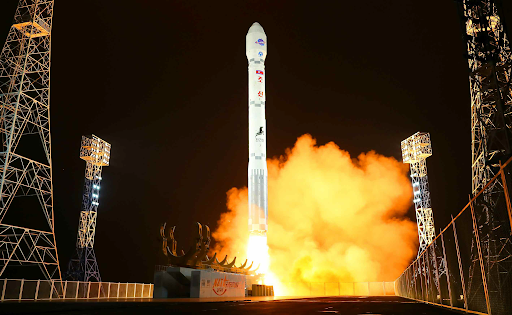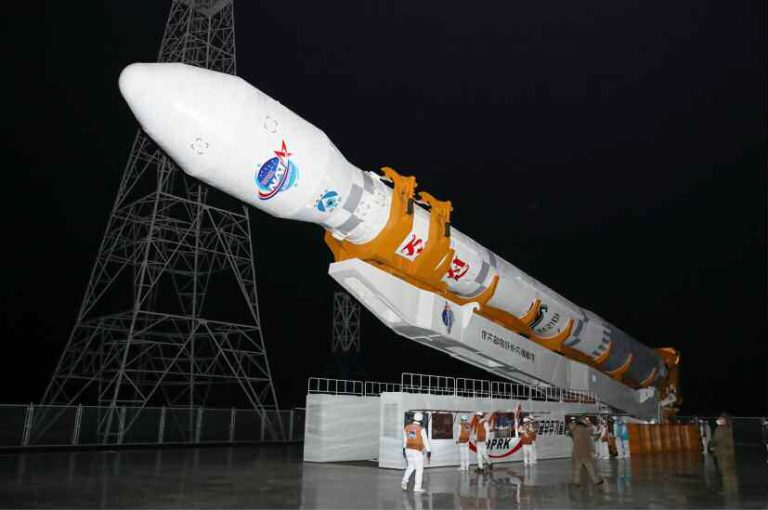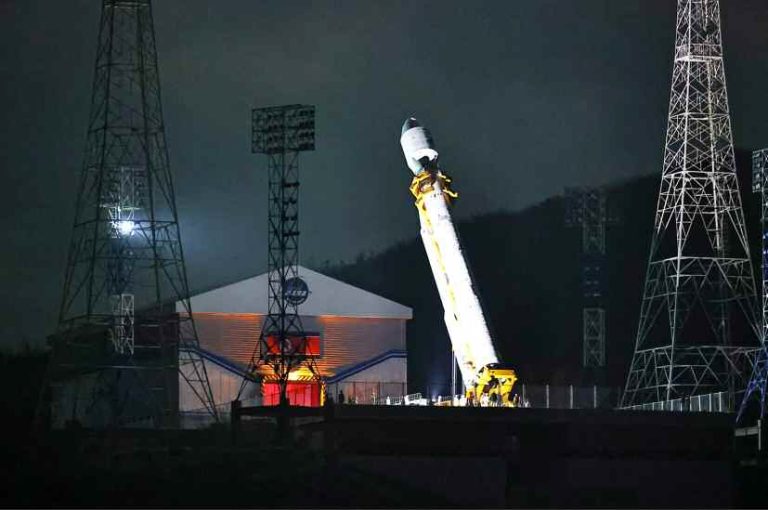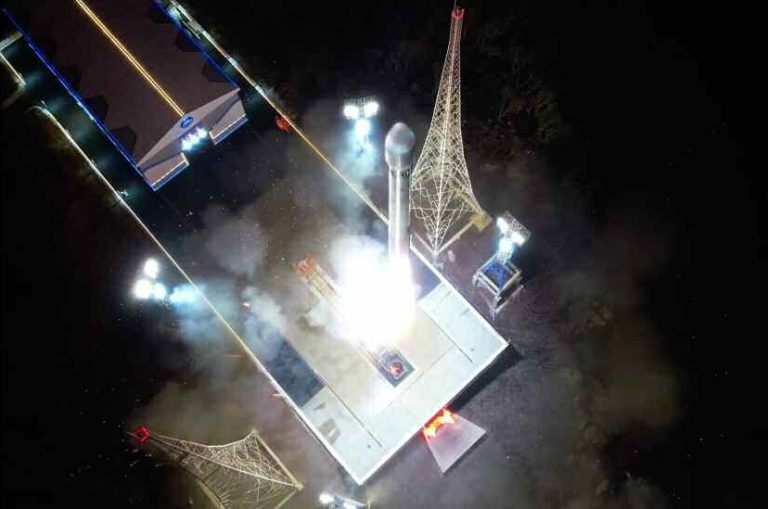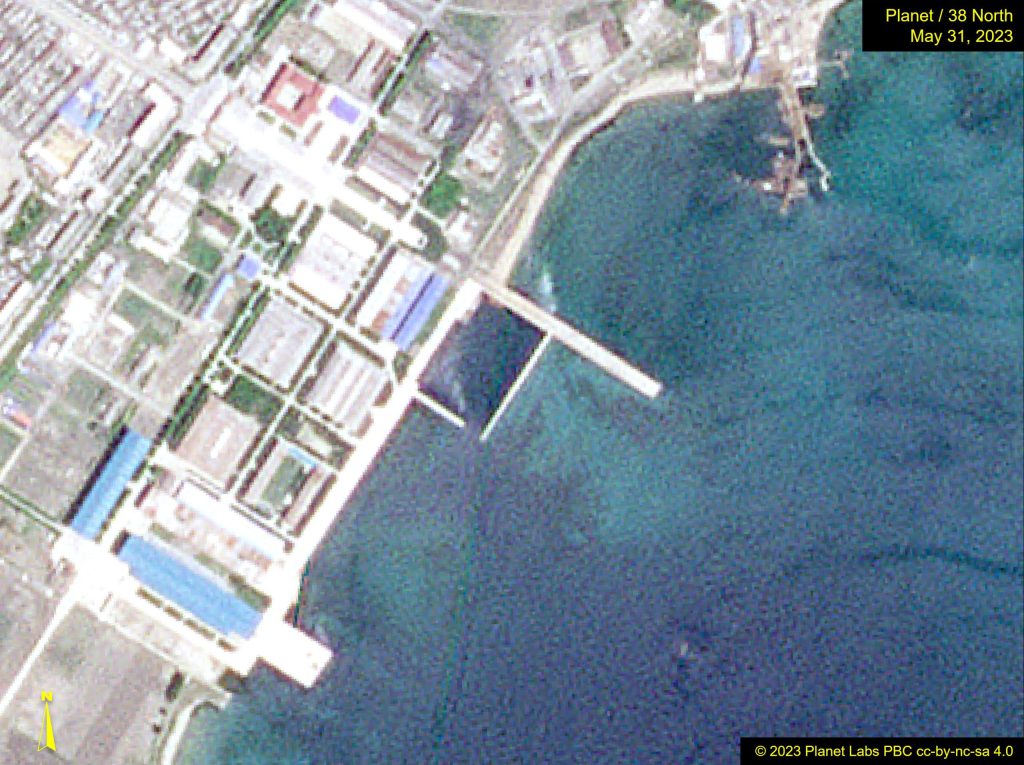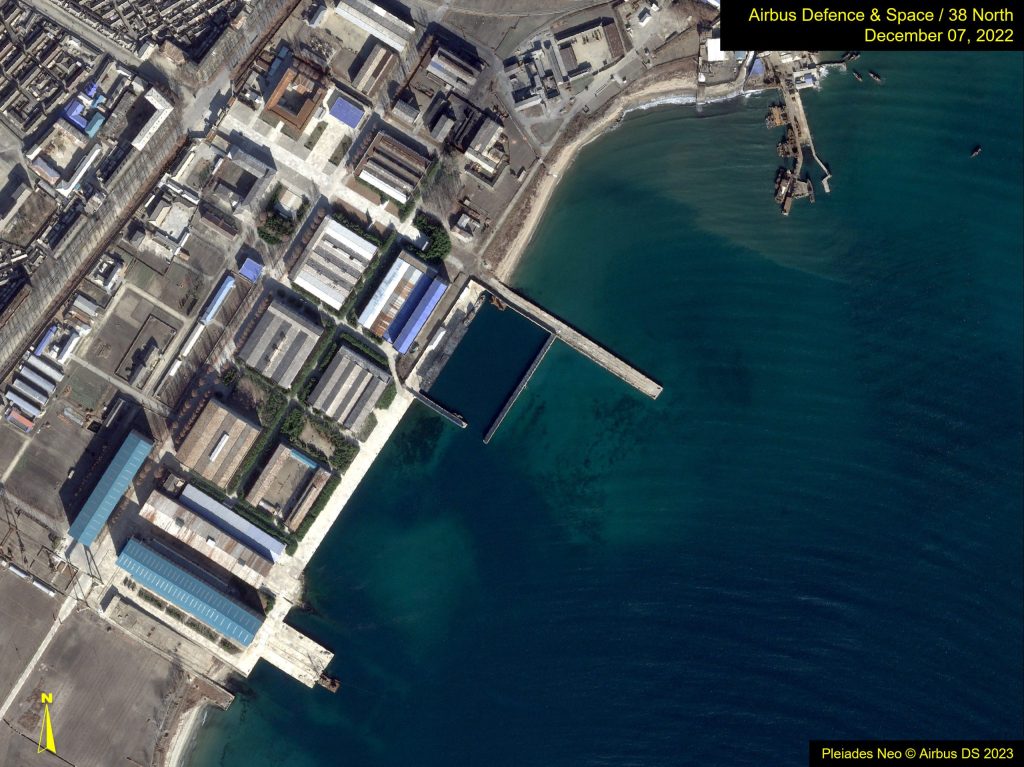Modest Beginnings: North Korea Launches Its First Reconnaissance Satellite
North Korea conducted a satellite launch on November 21, first reported by Japanese and South Korean sources. The next day, North Korean media announced a successful launch from the Sohae Satellite Launching Ground of the “Chollima -1” space-launch vehicle (SLV) orbiting the “Malligyong-1” reconnaissance satellite. This was the first successful launch of the Chollima-1 SLV after two previous failures. Based on images of the launch, there do not appear to have been any external changes to the SLV over the three launches, and Pyongyang probably regards the Chollima-1 as ready for further satellite launches.
The Malligyong-1 has been confirmed in orbit, making it North Korea’s first reconnaissance satellite, but it has not yet been confirmed to be functioning and in communication with the ground. Pyongyang has already obtained domestic and international prestige and propaganda value from orbiting the satellite, including by beating South Korea to the punch, but the Malligyong-1’s substantive contribution to North Korea’s military capabilities will depend on the resolution of its imaging system and how many such satellites the North eventually maintains in orbit simultaneously.
Although South Korea has claimed Russia assisted with the launch in the wake of Kim Jong Un’s September 13 summit with President Vladimir Putin, it is highly unlikely that any new equipment or technology could have been provided, installed and checked out in the relatively short time before the launch. While this success was almost certainly due to North Korea’s own engineering and development work, Russian assistance does have the potential to permit Pyongyang to develop more capable satellites and SLVs in the future.
The military contribution of North Korea’s current-generation imaging satellites will probably be modest in light of the satellites’ likely moderate resolution; the availability of better-quality imagery from China, Russia and commercial sources; and the probable substantial contribution of signals intelligence, human sources and open sources. However, as North Korea gains more experience operating its own imagery satellites, adds more satellites (as it has already announced it intends to do), and improves its satellite capabilities, it will likely come to see its imaging satellites as worthwhile and important. Improved satellites will probably will also require larger SLVs to orbit them, and there is already evidence North Korea is working on them.
First Successful Launch of Chollima-1 SLV
After a reported second-stage failure on May 31 and a third-stage failure on August 24, the Chollima-1 SLV appears to have been completely successful in its third launch, putting a satellite into an operational orbit. North Korea seems to have corrected the issues leading to the two previous failures, with just under three months between the last two launches—even if it did mean missing its self-imposed October deadline for the third launch. Based on photos and videos released by the North Koreans, there do not appear to have been any external changes to the SLV over the three launches, and thus, there is presumably no change in overall booster performance. Pyongyang probably regards the Chollima-1 as ready for further satellite launches.
Figure 2. KCTV video of the reported launch.
First North Korean Reconnaissance Satellite
South Korea and (indirectly) the US have confirmed the satellite is in orbit, but there has not yet been any corroboration of North Korea’s claims that the satellite is functioning and in communication with the ground. Although there has not yet been direct corroboration that the satellite is indeed for reconnaissance, its orbital parameters are consistent with such a mission.
Pyongyang has already obtained domestic and international prestige and propaganda value from orbiting the Malligyong-1. For example, the North was able to launch its first reconnaissance satellite before South Korea’s, which is scheduled for November 30, and do so on its own SLV rather than the foreign SLV (US SpaceX Falcon 9) being used by the South. The substantive contribution of the satellite to North Korea’s military capabilities, however, will depend on the resolution of its imaging system and, ultimately, on how many such satellites it maintains in orbit simultaneously.
Recent Russian Assistance Unlikely
On September 13, Kim Jong Un met Russian President Putin at the Vostochny Cosmodrome (space launch site) in the Russian Far East. Asked whether Russia would help North Korea build satellites, Putin replied, “That’s why we came.” Neither country has provided further clarity about what type of space-related cooperation, if any, has subsequently gone on between them. Earlier in November, South Korean officials said “there seem to be signs of the North receiving technical assistance from Russia” related to the satellite launch, and that the North was believed to have “almost resolved” its engine problems “with Russia’s help.” In the wake of the launch, South Korean intelligence reportedly briefed legislators, “There is intelligence that the North provided blueprints and data related to the vehicles used in its first and second attempts and Russia provided its analysis.”
South Korea has consistently tried to downplay the capabilities of North Korean satellites and SLVs, however, and there has been no corroboration from other Western sources of Russian assistance playing a material role in the successful satellite launch. Even if Russia has provided assistance, it is highly unlikely that (a) any new equipment or technology could have been provided by Russia to North Korea; (b) corresponding modifications could have been made in the Chollima-1 SLV or the satellite to accept such inputs; and (c) those inputs could have been installed and checked out in the relatively short time between the September 13 Kim-Putin summit and the November 21 launch. Despite outside claims that the success of the third launch was “the direct result of assistance from Russia,” it is highly likely that the success was due to North Korea’s own engineering and development work.
Depending on what might be provided over time, Russian assistance does have the potential to enable Pyongyang to develop more capable satellites and SLVs in the future. Russia also might decide to grant any North Korean requests to launch future satellites that are too large for the North’s own SLVs to put into orbit.
Modest Military Impact for Now
It remains to be seen whether North Korea releases any examples of imagery from the new satellite and if those examples are genuine. In the absence of such information, it is reasonable to assume that the current level of North Korean technology would yield an imaging satellite with modest resolution, particularly given the limited payload capability of the Chollima-1 compared to the much larger SLVs used to loft other countries’ reconnaissance satellites.
The Malligyong-1 is more likely to be capable of resolutions useful for “indications and warning” (I&W) intelligence—such as identifying military installations and their general activity levels—than for scientific and technical (S&T) intelligence, such as discerning and permitting the detailed identification and measurement of aircraft and missiles.
I&W-level satellite imagery (resolution of a couple of meters or so) would be helpful in detecting the construction of new facilities, noting substantial increases in activity at known facilities, and detecting large concentrations of troops, ships and aircraft. This would help Pyongyang detect and track a buildup of allied forces in the region, either to warn of a feared attack on North Korea or to prompt North Korea to update its targeting of such facilities and concentrations in an attack it was planning to conduct.
Figure 3a. An image of the Sinpho South Shipyard secure boat basin captured at 3-meter resolution. Image © 2023 Planet Labs, PBC cc-by-nc-sa 4.0. For media licensing options, please contact [email protected].; Figure 3b. An image of the Sinpho South Shipyard secure boat basin captured at 30-centimeter resolution. Image Pleiades NEO © Airbus DS 2023. For media options, please contact [email protected].
Although satellite imagery could also be useful to North Korea during a war to see how well its missile and other attacks had succeeded, and thus whether follow-on strikes were necessary, I&W-level satellite resolution would limit how much of this “damage assessment” information could be obtained. Moreover, such information would only be available as long as the ground stations in North Korea could receive satellite imagery information that survived allied attacks during the course of a war.
Current North Korean imagery satellites realistically will make only a modest contribution to all the other intelligence information North Korea receives. It is reasonable to presume Pyongyang receives higher-resolution satellite imagery information from commercial and military sources in China and Russia. It likely can also obtain better imagery information on the commercial market from other countries’ satellites via friendly governments, front companies, and possibly computer hacking as well.
All this imagery information would be in addition to what appears to be a robust signals intelligence and computer hacking effort focused on South Korea, Japan, and US bases in East Asia; potential human intelligence penetrations in South Korea and likely Japan; and probable extensive monitoring of open sources, including social media. Pyongyang almost certainly has worked these other sources of intelligence hard for many years, and it probably would be more confident of the combination of these other sources to provide warning of an alliance attack than its current imagery satellites, even after a suitable constellation was in play.
Although the contribution of current-generation imaging satellites to North Korean military capabilities will, therefore, be modest, Pyongyang will probably come to see them as worthwhile and important. Every country wants more intelligence, especially information it can gather and control itself. Whatever ability North Korean imaging satellites will have to gather information during an ongoing war will be particularly useful, especially given robust alliance air defenses that are likely to make obtaining tactical reconnaissance via drone and manned aircraft difficult.
Better Capability Likely in the Future
Indigenous satellite imagery is likely to increase its contributions to North Korea’s military capabilities over time as Pyongyang gains more experience in operating its own imagery satellites, adds more satellites, and improves satellite capabilities and ground infrastructure.
In the wake of the satellite launch, North Korea announced its intention of “additionally launching several reconnaissance satellites in a short span of time” and noted “the need to launch more various reconnaissance satellites, put them on different orbits and operate them in a combined and practical manner…to provide the DPRK armed forces with abundant valuable real-time information about the enemy.” The current satellite’s orbit allows it to appear over the Korean Peninsula around 10:00 a.m. and 10:00 p.m. every five days, suggesting the need for an operational network of five or so satellites for regular coverage. The Malligyong-1 apparently is geared toward daytime, clear-weather imaging. Therefore, it is reasonable to expect North Korea to seek radar and possibly imaging infrared satellites to plug those coverage gaps in the future.
Increasing satellite capability may require satellites that are larger and, therefore, larger SLVs to put them into orbit. The original launch pad at Sohae has been under modification since March 2022, almost certainly for a larger SLV. It seems pretty clear there should be more evidence of such an SLV in the near future.

